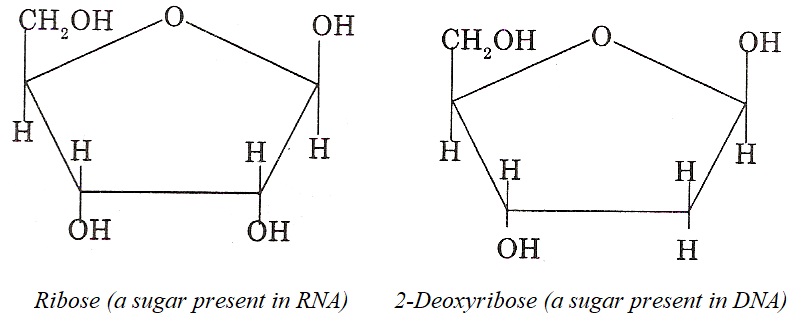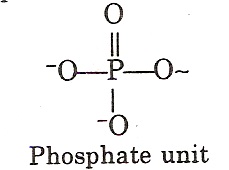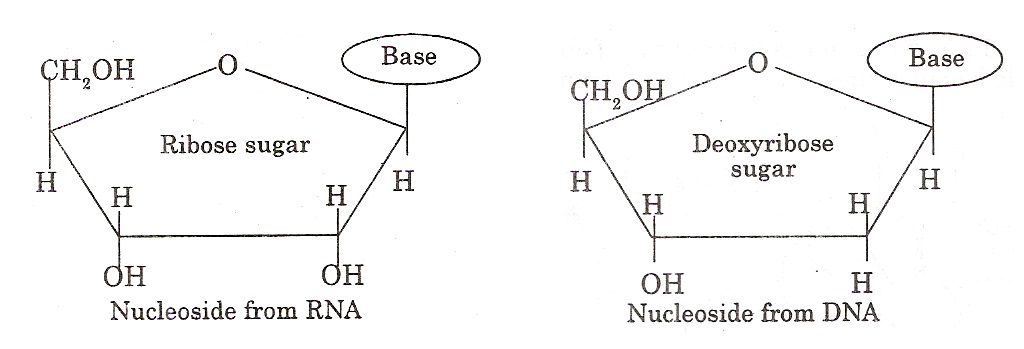Nucleic acids are the biologically important polymers which are present in all living cells. They play an important role in the development and reproduction of all forms of life. They direct the synthesis of proteins and are responsible for the transfer of genetic information (hereditary characteristics). The repeating units of nucleic acids are called nucleotides. Therefore, the nucleic acids are also regarded as polynucleotides. There are two types of nucleic acids namely—DNA (Deoxyribonucleic acid) and RNA (Ribonucleic acid). A nucleotide consists of three chemical components— (i) A nitrogen containing heterocyclic base. (ii) A five carbon sugar. (iii) A phosphate group.
1) Nitrogen containing heterocyclic base:- There are two different types of heterocyclic nitrogeneous bases. These are known as puriness or pyrimidines. The heterocylcs present in nucleic acid are substituted forms of these compounds. The common examples are as follows— Adenine (A) and guanine (G) are purines and Cytosine (C), thymine (T) and uracil (U) are pyrimidines.
2) Sugar:– There are two types of sugars present in nucleic acids. The sugar present in RNA is D-ribose and in DNA is D-2 deoxyribose as shown below.

3) A phosphate group:- These are responsible for the linkage in nucleic acid polymers. The phosphate group in nucleic acid is:

The phosphate group is bonded to a hydroxyl group of the sugar.
Nucleosides and nucleotides: The molecule in which one of the nitrogen bases (purine and pyrimidine) is bonded with a sugar molecule is called nucleoside. The nucleosides of RNA and DNA differ in two respects:

When the phosphate group is attached to the nucleoside, the compound formed is called nucleotide. Thus a nucleotide contains a sugar unit linked to nitrogen base and phosphate group unit. Their structures are shown below.

In nucleotides, the sugar rings are attached to the nitrogen atom of the heterocyclic ring by a bond between C1 atom of sugar and nitrogen atom of heterocyclic ring. This linkage is called glycosidic bond. The phosphate group is bonded to a hydroxyl group of sugar. Therefore, the consecutive joining of sugar unit of one nucleotide to the phosphate group of next nucleotide results in a long chain polymer called nucleic acid. Thus, the nucleic acid backbone is consists of alternate sugar-phosphate residues. One of the four nitrogen base residues is attached to each sugar unit on this backbone.